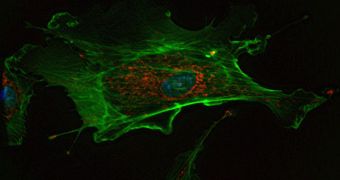A team of investigators at the J. Craig Venter Institute last month managed to create the first synthetic cell. They replaced the genetic material in a microorganism with a new batch of the stuff, but one that was designed artificially. The team says that the complete synthetic genome featured more than 1,080,000 base pairs, and analysts agree that this is a remarkable achievement. The discovery has elicited a great deal of attention, both from the international scientific community, and from the US Congress and President Barack Obama. Now, the Venter group explains how their success became possible.
What their work did was basically provide bioengineers and other experts with additional means of controlling the basic stuff that make up life as we know it. The new level of control can be exercised right down to a molecular scale, which means that infinite variations of their accomplishment can be achieved by other team. In addition to new, improved vaccines and creating cells that produce whatever substances they are required to, the innovation could also lead to significant advancements in the field of fuel production, the Venter group believes.
“The hope is that by understanding the basic principles of cellular life, we will be able to make cells make more stuff. I've always wanted to know how cells work, and now we have the tools,” explains Venter Institute professor John Glass. One of the things that really stand out from the work is the fact that microorganism cells, such as those used to produce insulin for diabetics, could see their production augmented several times over. This is possible because the research now allows experts to essentially turn off all other metabolic processes, that take up energy, and are of no use to us, Technology Review reports.
The new work is “a culmination of a series of impressive steps. If you look over the last few years, at what they've been able to produce, it's definitely impressive. Being able to create genomes of this scale? That's impressive,” says associate professor of biological engineering Ron Weiss, who is based at the Massachusetts Institute of Technology (MIT). He was not a part of this investigation. Geneticists will soon be able to create a genome out of the blue, transplant it into a donor cell that had been emptied of its own genome, and then wait for the fully-fledged, synthetic organism to grow. Details of the study were published in the May 20 issue of the esteemed scientific journal Science.

 14 DAY TRIAL //
14 DAY TRIAL //